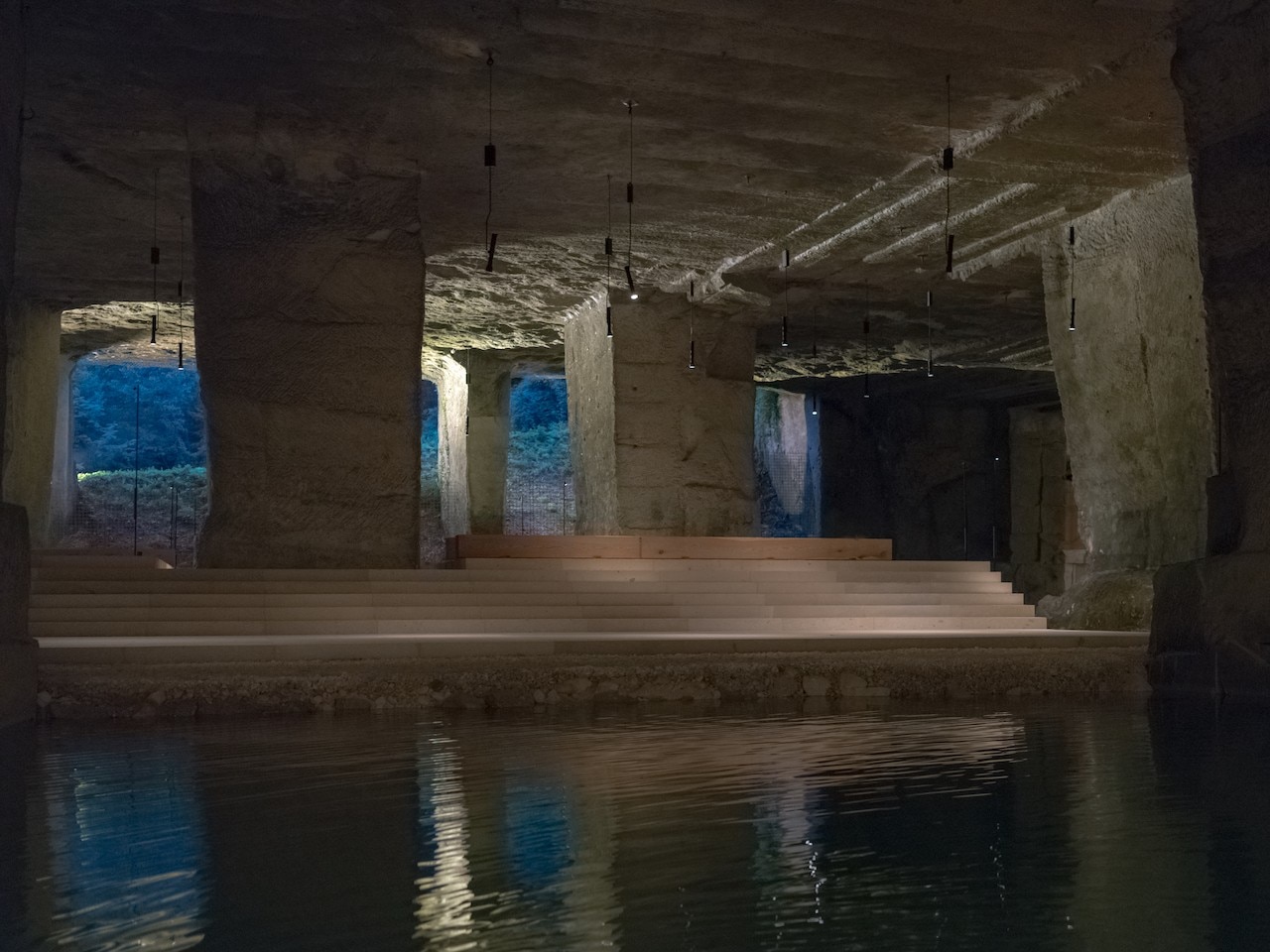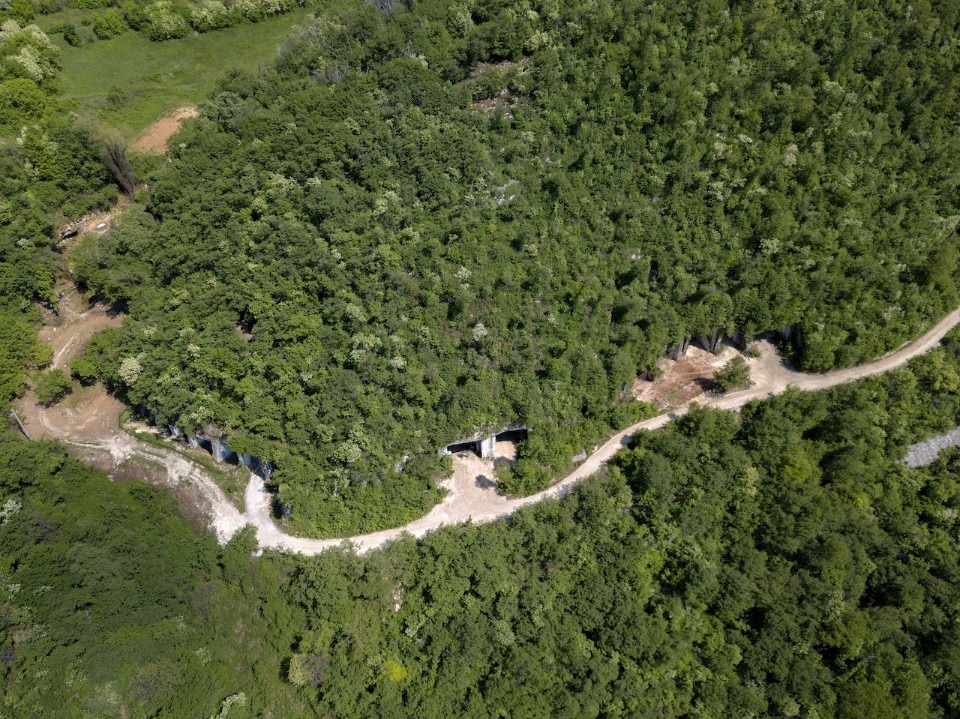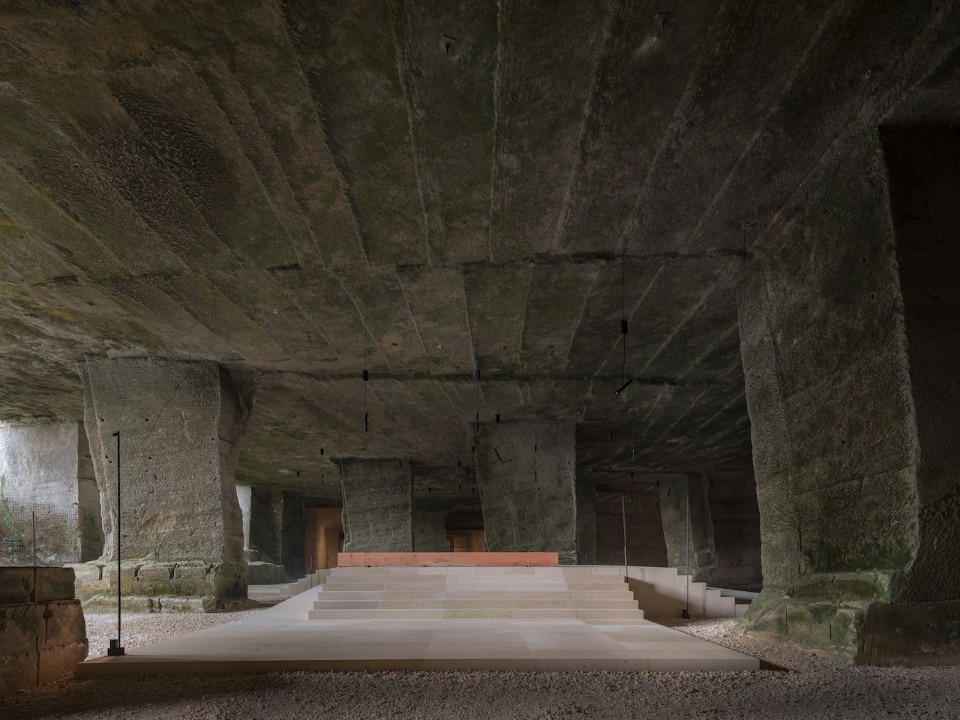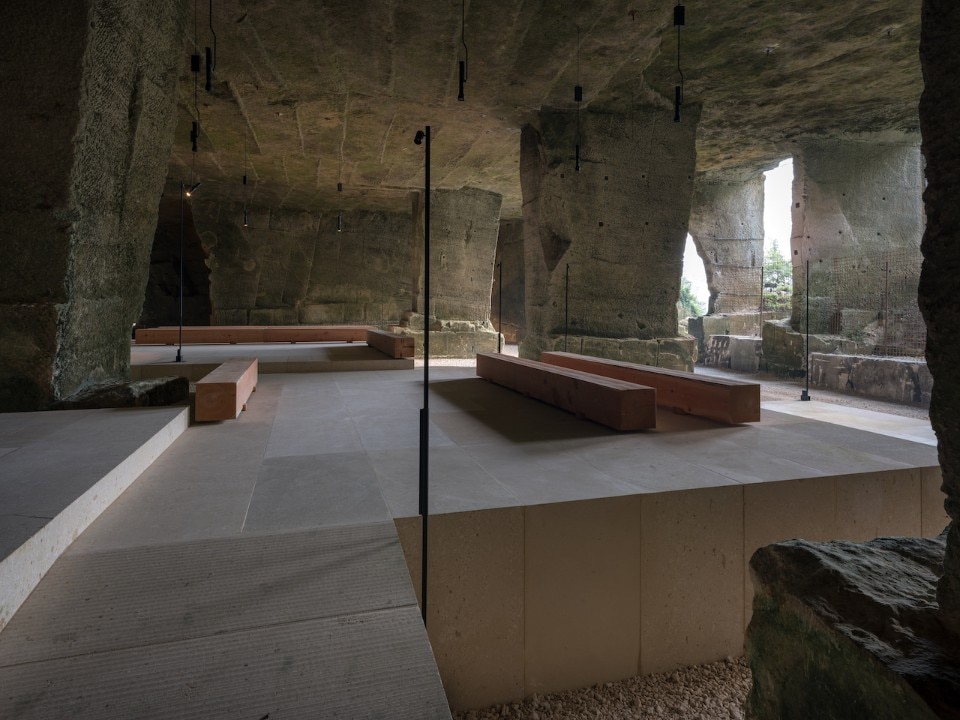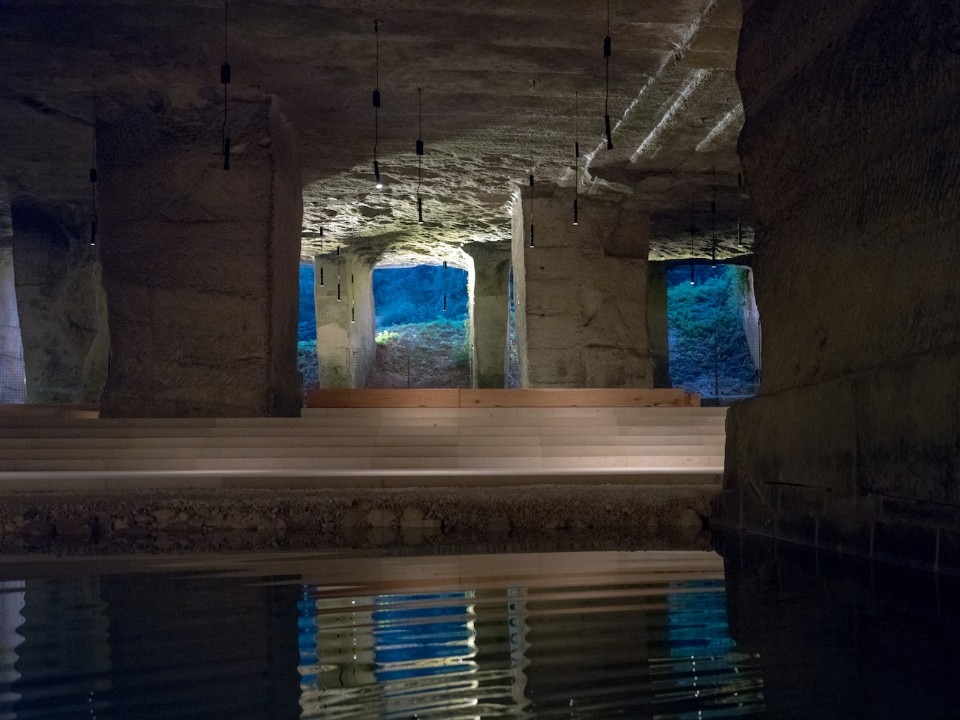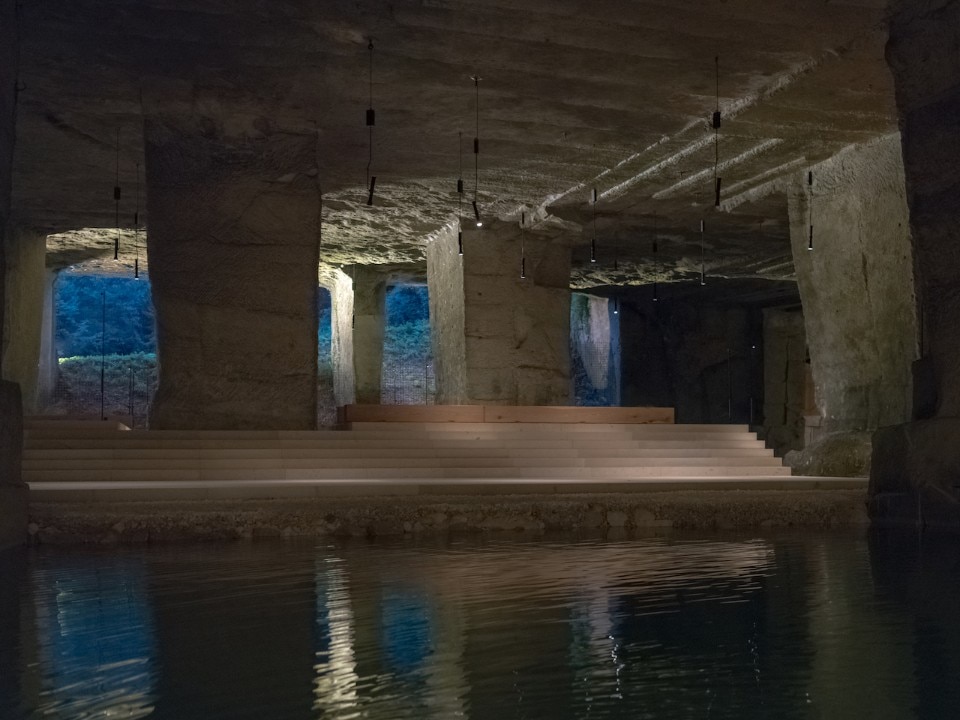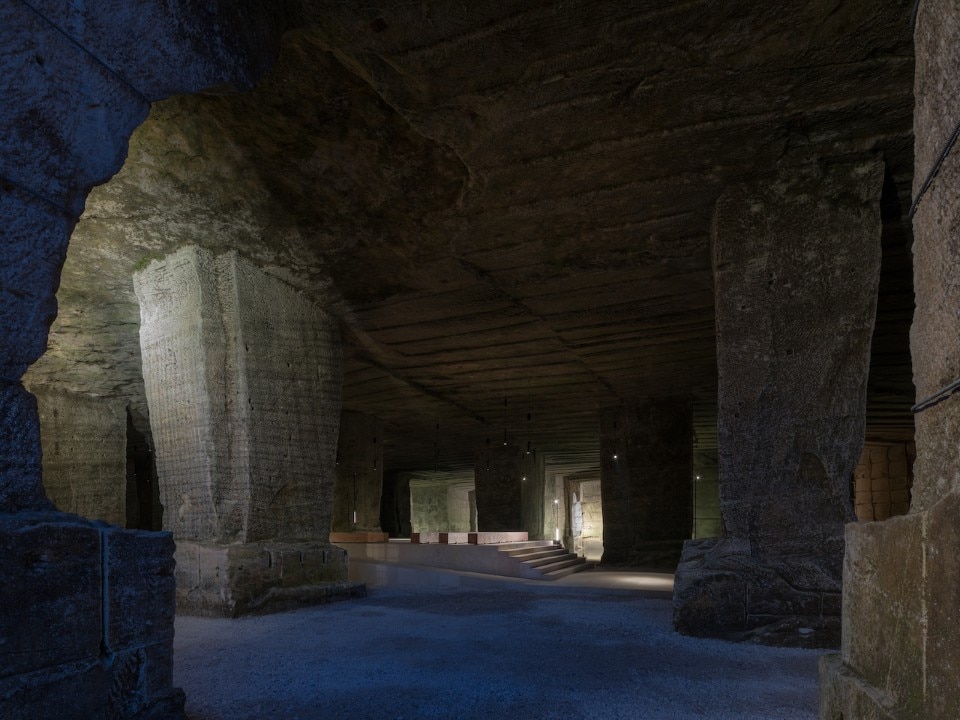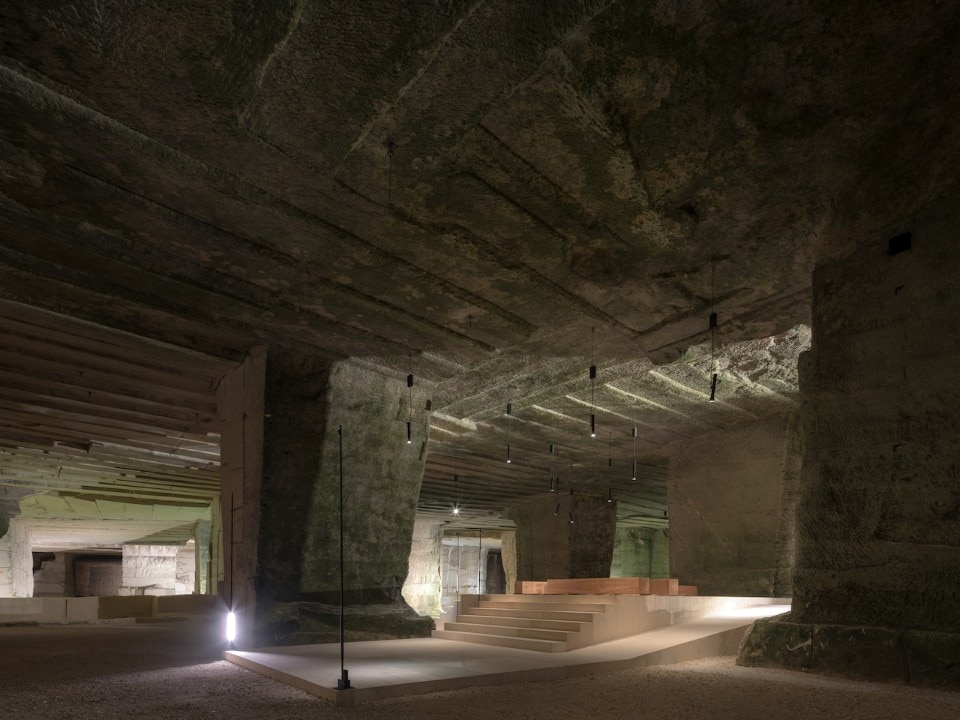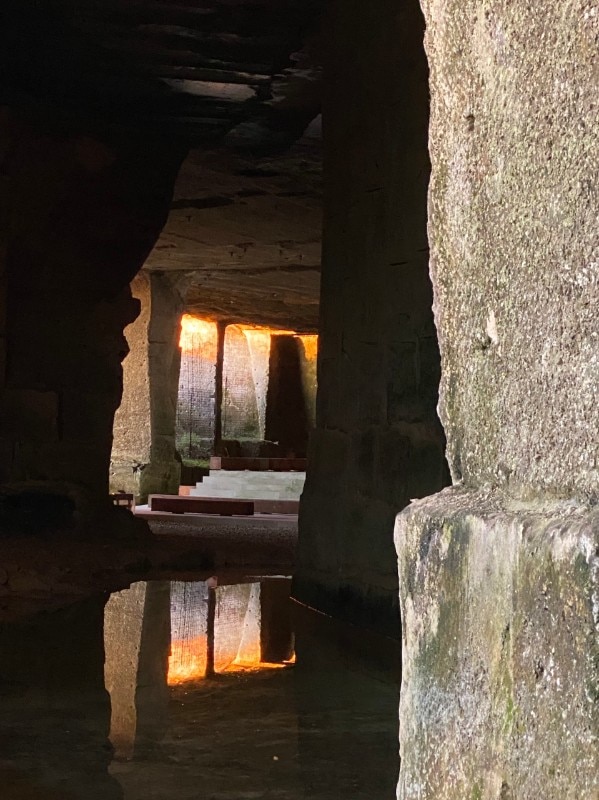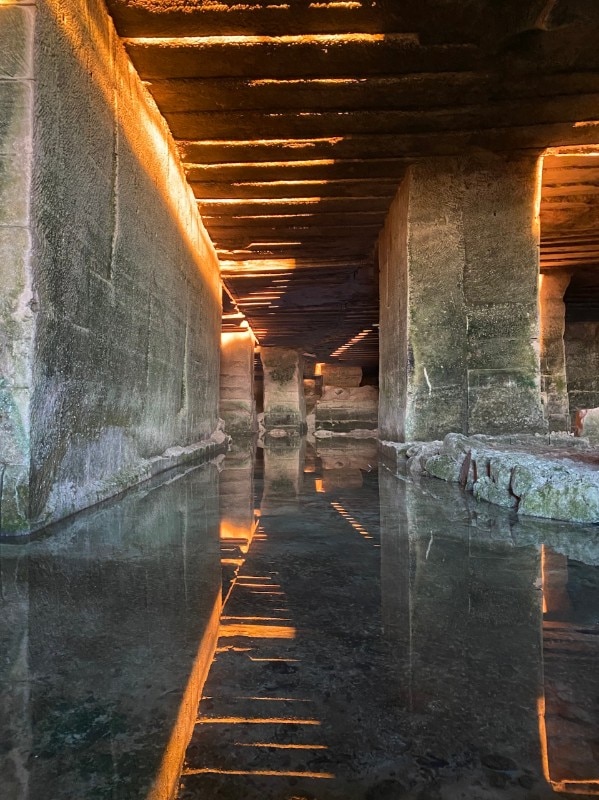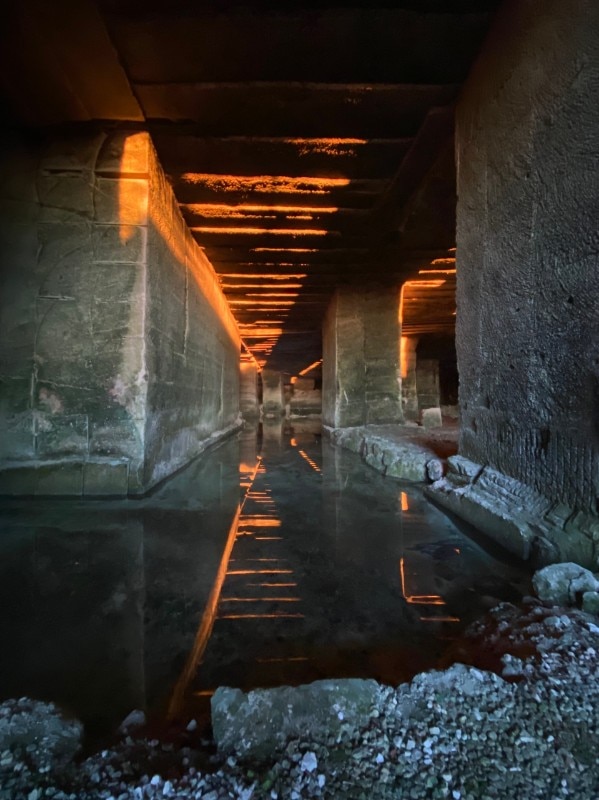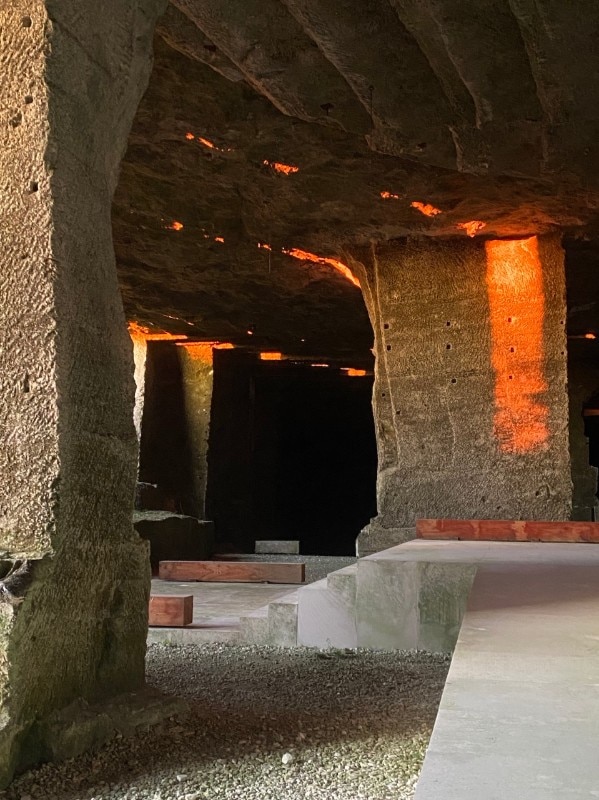Morseletto. It is a name among the many that populate northern Italy, the name of a family of “taiapiere” (stonecutters) from Vicenza, Veneto region, but also a name that catalyzes a myriad of trajectories running throughout the recent history of architecture, design, and art. A name much stronger than that of the Cava Arcari, the quarry in Zovencedo that actually embodies and provides what has allowed Morseletto to become the catalyzer we are just told about: stone, the white Vicenza stone that is quarried horizontally in blocks from underground, generating hypogeal temples with stepped ceilings and megalithic pillars.
A place that today claims even more explicitly its metaphysical force, with the steps of a podium designed by David Chipperfield that are mirrored in an omnipresent water, almost more present to ears than eyes; but also a place that, like all kind of programmed metaphysics architecture has accustomed us to over the years, acquires its full meaning the moment one gets to know their story; and there, the story brings that name with which we opened our story: Morseletto.
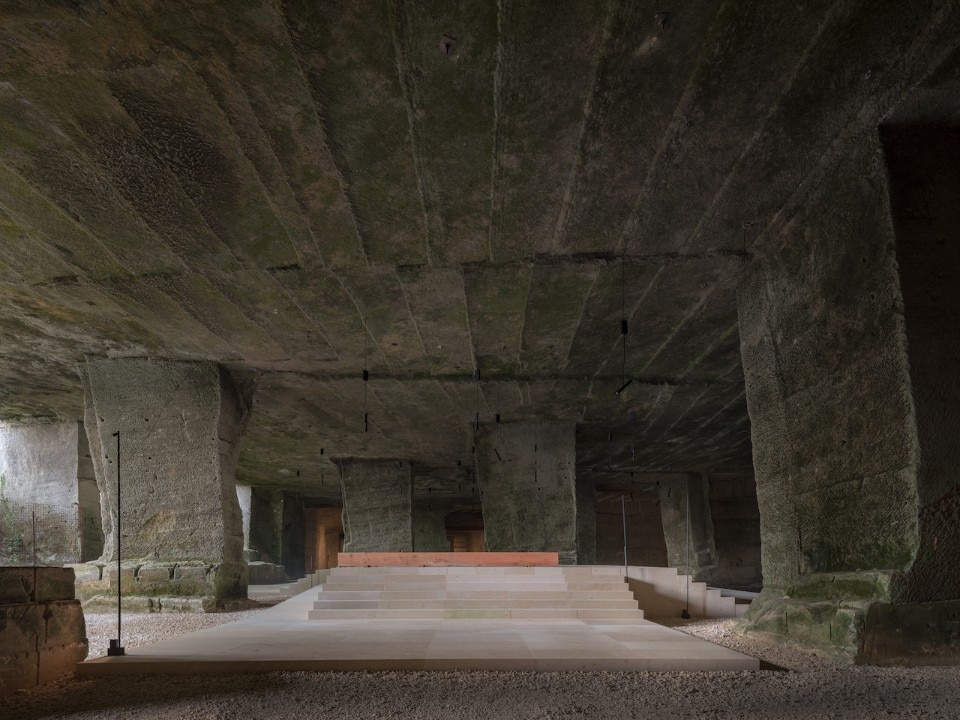
Three generations always looking at arts and crafts at the same time, the Morselettos have devoted decades to working with stone, and then to transposing traditional techniques such as marmorino or Venetian terrazzo into the present. Pietro “Piero” Morseletto already marked this path by studying sculpture in Vicenza and Brera academy and then by increasingly broadening his activity from creation to production, from the studio to the Laboratorio (the Workshop), which he started in 1920: his commissions were soon striking, from the fountain in the Italian garden of tycoon Pierre Sommel du Pont in Pennsylvania, to the restorations of the bombed Teatro alla Scala and the supply of statues for the Milan-based BBPR group.
The following generations – son Paolo and granddaughters Barbara and Deborah – literally got this list exploding, until it extended to almost every name in architecture, design, and art one could imagine: a listing that could risk being boring, but this would mean deeming as boring the whole history of contemporary design itself. It is about relationships with Carlo Scarpa for the Brion cemetery in San Vito d’Altivole; about Palladian architectures restored, such as the villa La Rotonda and the Basilica of Vicenza; about collaborations that have become friendships, such as the one with Frank O. Gehry – who tapped Morseletto to realize the surfaces of DG Bank in Berlin, after also attempting the feat for the Walt Disney Concert Hall – and with Alvaro Siza – stories of Venetian dinners complemented by late-night departures to quarries to pick out stones, as the heirs recount; about crucial semantic turning points in design such as Shiro Kuramata’s use of Venetian floor terrazzo as a material for furnishings, in the 1983 Kyoto collection for Memphis.
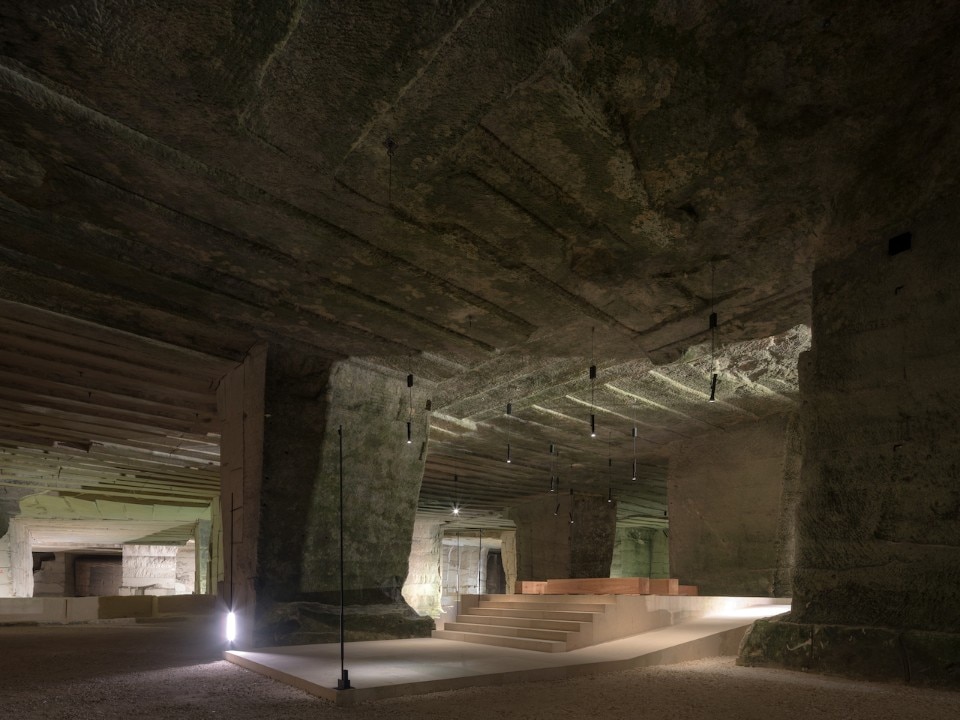
What is built around Morseletto is a galaxy of connections that are first and foremost personal and cultural, as well as professional: while the Zovencedo quarry was standing within its hillside (quite) quietly producing, Paolo had become a nodal figure in the system orbiting around Vicenza, made up of intellectuals, writers, artists – Lionello Puppi, Virgilio Scapin, Luigi Meneghello – and clearly of architects. The Laboratorio would then participate in architectural events, often housing them: awards such as DedaloMinosse and Premio Barbara Cappochin, with exhibitions dedicated to Kengo Kuma, Zaha Hadid, then Siza and Eduardo Souto de Moura.
This until Marco Paolini’s show Il sergente (The Sergeant), dedicated to Mario Rigoni Stern, was staged in the eventually dismissed Zovencedo quarry in 2007, with Rigoni himself attending the performance: the effect of the event would remain deeply rooted, as would the idea that the cultural epicenter of the Morseletto galaxy could extend from the Laboratorio to the Quarry – making it a place where the atmospheres of a temple and a theater could be experience at the same time – and that the project should involve one of the most relevant names of that now vast galaxy: David Chipperfield.
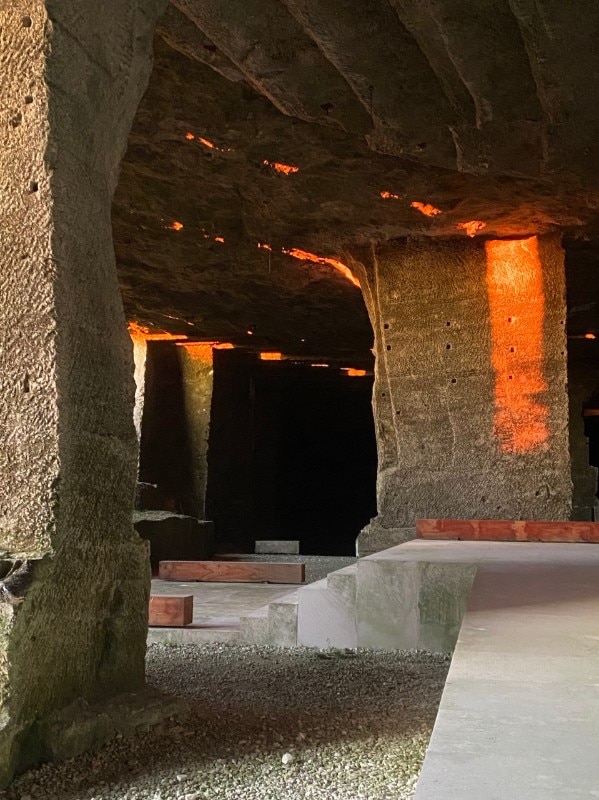
It's a name that had been around for a long time – he created the Valentino stores where Morseletto realized wall-applied terrazzo and Carrara marble stairs – a name that would almost naturally come to be associated with the kind of spaces that the Cava with its shapes already seemed to evoke. The project started in 2010, stretched out over almost a decade, Deborah Morseletto tells us, with ceaseless back-and-forth between London and Milan, Piranesi-inspired sketches first, quite a few lifelike mockups later, until the opening on May 18, 2018.
When it opened to the public, what Cava Arcari disclosed was first and foremost a water landscape: Vicenza stone is easy to carve and handle because it is highly hydrated, and the entire quarry at the start was overrun with water, so much so that it had to be partially drained, until the topography of today was achieved, with the large central pillar to walk around and then reach the core, the upturned theater cavea, the podium of steps that instead of catalyzing the public’s attention turns towards it, and towards those other steps that, like from a mirror without glass, are reflected in the marks that years of quarrying have left on the vaults. Chipperfield has extended the Piranesian reference to the geometric compositions of Adolphe Appia, the first set designer to revolutionize his discipline by substituting abstract forms to painted curtains and backdrops.
And this is the hypogeal landscape of Cava Arcari in the end: a monomateric universe – Vicenza stone above, below and around – dashed by a few lines of wood, contrasted by water and shrouded by vegetation.
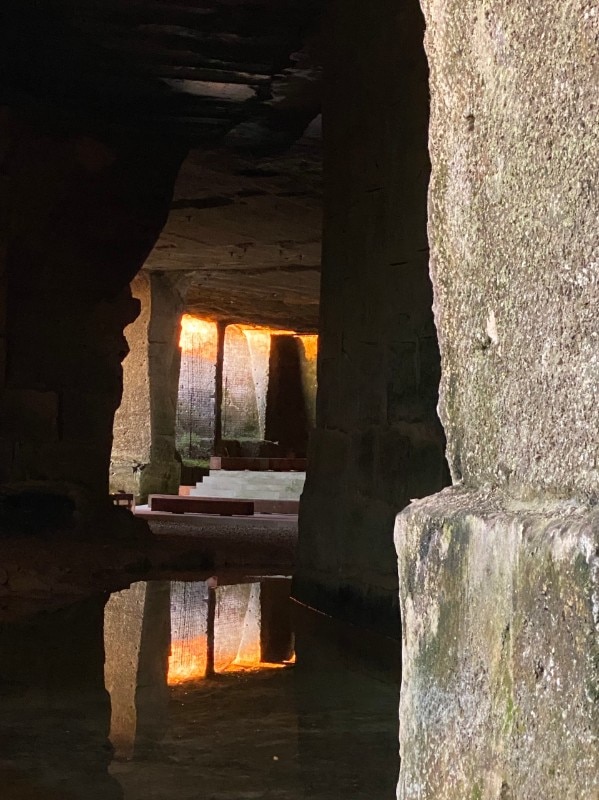
And, again, horizontally sectioned by an additional, less tangible plane, generated by the lights co-created with Mario Nanni for Viabizzuno: a series of “bats” hanging from the vault to offset it further down, complementing those lights that shine from below water level, and ready to be removed by the end of each single event. A last-minute intuition, says Deborah Morseletto: the conventional solution on rails, as planned until a week before the opening, just did not convince her, while the idea of this “second sky” that representing a feasible reprise of a formerly shelved proposal – a constellation of oil lamps – was then the one to be chosen.
Cava Arcari today, with its cyclical repetition of voids and solids coloring its character with a flair someway between the unfinished and the geological, is a great device that generates interactions, with landscape, time and seasons above all. Different layers of artifice – the one designed and placed by Chipperfield, the one excavated by stone quarrying, the one of laying a cultural layer over both the natural and productive ones – end up unveiling us landscape for what it is, a human creation, and enter into symbiosis with the material, with that nature to which they owe everything. A natural, organic, harmonious body is created there where instead one might think at first that the highest, most abstract level of rationality – if not of reason itself – has been reached.


